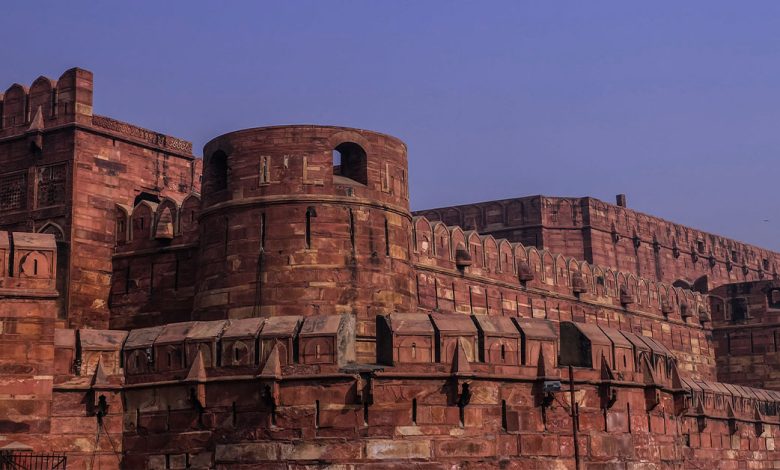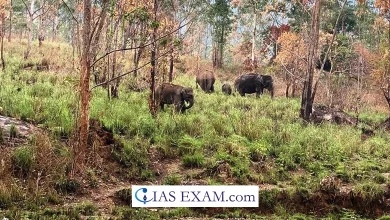Daily Current Affairs for UPSC
Swadesh Darshan 2.0
Syllabus- Government Policies and Interventions [GS Paper-2]

Context- Under the Swadesh Darshan 2.0 program, which was launched in January of this year by the Ministry of Tourism, 30 cities from 15 states are being shortlisted to be developed as sustainable and responsible destinations.
Key Highlights
- The idea for Swadesh Darshan 2.0 was to concentrate on a single location at a time to attract domestic tourists.
- Additionally, it is compatible with the proposed new tourism policy for the upcoming Parliament session.
- This is a part of the country’s new domestic tourism policy, which focuses on destination management rather than theme-based tourist circuits.
- Madhya Pradesh, Karnataka, Tamil Nadu, Uttar Pradesh, and Maharashtra are among the 15 states.
- The Dwarka-Dwarkadhish Temple, Nageshwara Jyotirlinga Temple, Shivrajpur Beach, Sudama Setu, Rukmani Devi Temple, Gopi talab, and Bhadkeshwar Mahadev Mandir are just a few of the tourist attractions that will be developed within 50 kilometers of Dwarka.
- The fossil park, viewpoints, hiking trails, regional arts and handicrafts, and the village life experience at Dholavira, a UNESCO World Heritage Site and one of the largest well-preserved Indus Valley sites in Gujarat, will be the focus in order to create a healthy experience.
- The Buddhist Circuit, the North-East Circuit, the Ramayana Circuit, the Wildlife Circuit, the Rural Circuit, and other notable circuits were launched as part of the scheme.
- The new plan will also cover the UT of Chandigarh, which is strategically located between Punjab, Haryana, and Himachal Pradesh.
- The plan aims to develop Sukhna Lake, Rock Garden, Bird Park, and the Capitol Complex, which is a UNESCO World Heritage Site.
- Assam’s Kokrajhar, a popular wildlife tourism route that includes Manas National Park, Raimona National Park, and religious sites like Mahamaya Dham and Mahamaya Snan Ghat, will be given priority for overall development and enhancement in the north-east.
- According to officials, the Dwarka-Dwarkadhish Temple, Nageshwara Jyotirlinga Temple, Shivrajpur Beach, Sudama Setu, Rukmani Devi Temple, Gopi talab, and Bhadkeshwar Mahadev Mandir, as well as Majuli and Shivsagar, will also be developed.
- The scheme, on the other hand, was unable to take off in the manner that was anticipated, primarily due to the necessity of dispersing resources across a number of states and involving an excessive number of stakeholders.
Swadesh Darshan Scheme
- It was launched between 2014 and 2015 with the goal of integrating the development of theme-based tourist circuits like the Buddhist Circuit, the Coastal Circuit, the Desert Circuit, the Eco Circuit, the Heritage Circuit, the Northeast Circuit, the Himalayan Circuit, the Sufi Circuit, the Krishna Circuit, the Ramayana Circuit, the Rural Circuit, the Spiritual Circuit, the Tirthankar Circuit, the Wildlife Circuit, and the Tribal Circuit.
- It receives all of its funding from the central government, and efforts are made to integrate it with other programs run by the federal and state governments. Additionally, efforts are made to take advantage of the voluntary funding that is made available to CSR initiatives run by central public sector organizations and corporations.
- Objectives:
- to make tourism known as a major driver of economic expansion and job creation.
- Develop tourist-friendly circuits in a planned and prioritized manner.
- Advance social and legacy worth of the country to create vocations in the distinguished areas.
- Upgrading the vacationer engaging quality in a feasible way by creating top notch foundation in the circuit/locations.
- Follow a development-based community and a tourism-for-the-poor approach.
- educating the local communities about the significance of tourism to them in terms of increased income, improved living conditions, and the region’s overall development.
- to develop theme-based circuits in order to make full use of the potential and advantages of the nation’s infrastructure, national culture, and distinctive strengths of each region.
- enhancement of visitor satisfaction and experience through the development of tourist facilitation services.
Swadesh Darshan Scheme 2.0
- The redesigned program known as Swadesh Darshan 2.0 aims to realize India’s full potential as a tourist destination and promote “vocal for local” as its guiding principle.
- Swadesh Darshan 2.0 is a generational shift to transform the Swadesh Darshan Scheme into a holistic mission to create sustainable and responsible tourism destinations. It is not an incremental change.
- With a focus on tourists and destinations, it will aid in the creation of sustainable and responsible destinations.
- It will encourage the creation of generic and theme-specific benchmarks and standards for the development of tourism destinations, and states will adhere to those benchmarks and standards when planning and developing projects.
- The Scheme has identified the following significant tourism themes:
- Tourism of Culture and Heritage
- Adventure Tourism
- Eco-Tourism
- Wellness Tourism
- MICE Tourism
- Rural Tourism
- Beach Tourism
- Cruises – Inland and Ocean
- Significance:
- The new plan aims to increase tourism’s contribution to local economies.
- It aims to improve the skills of local youth in tourism and hospitality, increase private sector investment in tourism and hospitality, preserve and enhance local cultural and natural resources, and create jobs for local communities, including self-employment.





.png)



